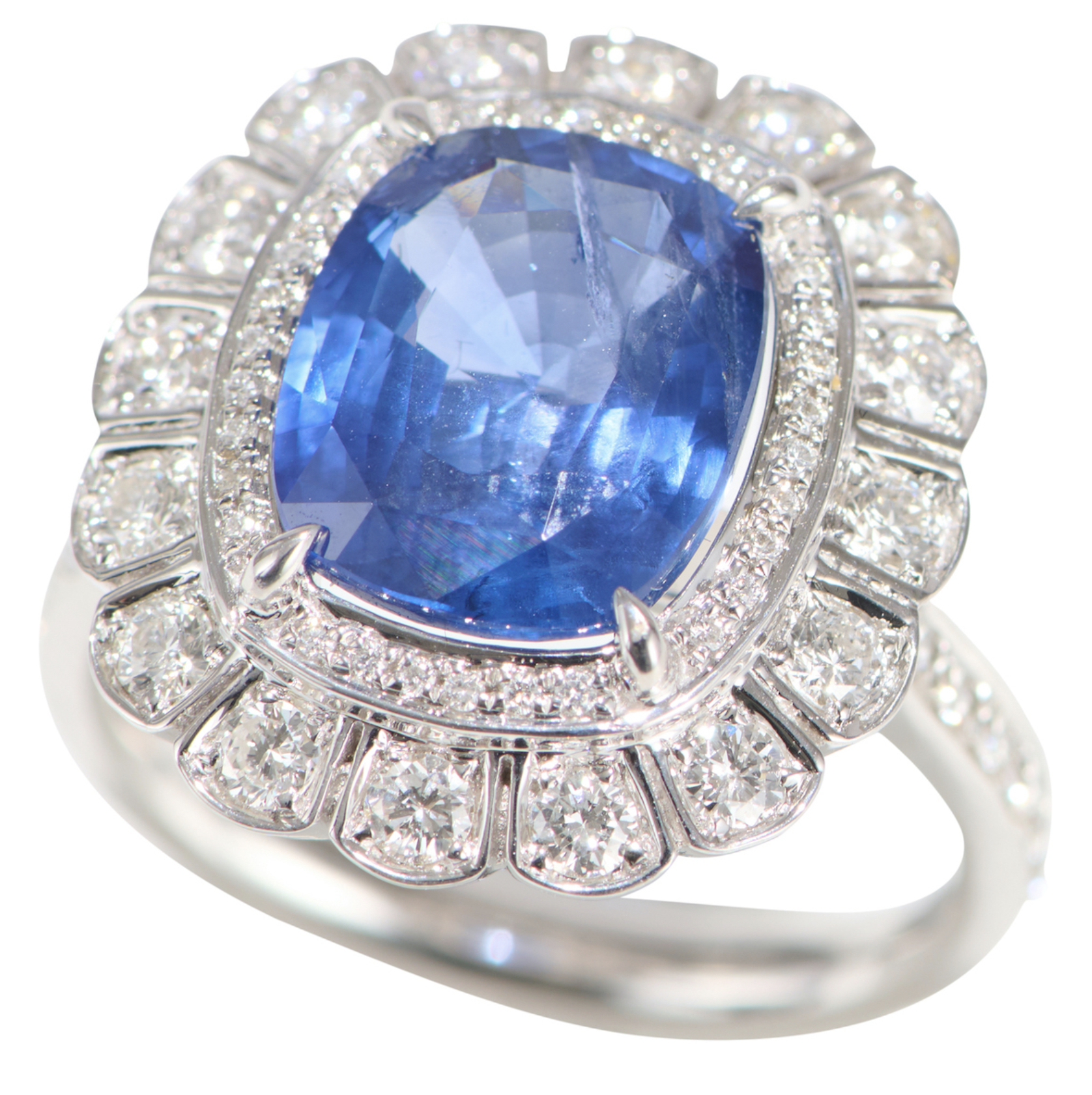
Sold for $6,000
Ruby; stemming from the Latin work for red ruber, immediately conjures up images of stones in vivid red hues. The Liberty Bell Ruby, The Sunrise Ruby, and those in Elizabeth Taylor’s expansive jewellery collection are some of the most famous to name a few.
Sapphire; rich deep blues, the featured stone in Princess Diana’s engagement ring, the birthstone of September and the representative gem of a 45th anniversary.
In their most recognisable forms, the ruby and the sapphire are poles apart, literally on differing sides of the colour spectrum to each other. However, in their chemical composition, they are the same stone Corundum. A conundrum indeed!

Sold for $10,625
Aluminium oxide (Al2O3) are the chemical elements that make up the corundum group; a group that was not correctly identifiable until around 1800. Before this time, red spinel and garnet were also called ruby, a misnomer that lives on today in the Black Prince’s Ruby featured in the Imperial State Crown of the United Kingdom; a ‘ruby’ that is in fact, a spinel.
Corundum can be found in a wide array of colours other than reds and blues. These do however fall under the sapphire moniker prefixed with the colour e.g. pink sapphire, yellow sapphire, green sapphire and so on and so forth to include brown, black, colourless and the rare Padparadscha – a unique blend of pink and orange. Parti-coloured sapphires with their intriguing meld of two individual colours in one stone are also having a resurgence in popularity.

Sold for $3,750
Varying amounts of the metallic oxides iron, titanium, and chromium are what determine the colour of a corundum stone e.g., a higher amount of chromic oxide colours a stone red, and a higher amount of titanium oxide colours a stone blue, with all manner of combinations in-between making up the rainbow of fancy coloured sapphires. It is therefore understandable that different localities produce more of one type of corundum then another dependant on how rich the earth’s crust is in the various elements. Although rubies and sapphires can be found in each of these countries, ruby production has been high in the chromium heavy grounds of Myanmar, Mozambique and Pakistan and sapphires have been heavily mined in India, Columbia and Australia where titanium and iron oxides levels are prominent.

Sold for $40,000
Corundum’s have featured heavily in jewellery for hundreds of years not only because of their aesthetic appeal but because of their durability, literally. They are second to the diamond on Moh’s hardness scale and withstand abrasions well, making them ideal for rings, bracelets, and daily wear.
Price also influences the popularity of corundum. Although a ruby can be more valuable than a diamond of similar quality and size, the value decreases more rapidly dependant on size, quality and colour. The opportunity to still purchase a precious stone at a lower price point attracts a solid market.
The puzzle of corundum and its vast assortment of colours and names will remain unknown to many, with most understandably choosing a ruby, a sapphire or a Padparadscha simply for a favoured colour, birthstone or pertinent to a specific budget. However, if for nothing more than general knowledge, the idiosyncrasies of the corundum group are quite fascinating and a great conversation piece at the next jewellery auction!
Hannah Sass, Jewellery Manager
July 2021
